The Land Of China -- Explore by Province
Jilin
The Jilin Province is located in the center of Northeast China, bordering on Russia in the east and neighboring the Korean Peninsula with the Yalujiang River and Tumenjiang River as the dividing line. The province covers an area of 187,400 square kilometers and has a population of 25,744,000 that includes the Han, Korean, Manchurian, Muslim, Mongolian, and Xibe ethnic groups. The economy is mainly driven by its forest industry. Jilin contains 8 cities, 1 prefecture, and 41 counties and cities at the country level and 18 prefectures under the municipalities. Its capital is Changchun.
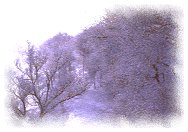 Jilin
Jilin
|
There is a large area of primeval forest on the Changbai Mountains in the east of the province. The forest has rare birds and animals as well as a great variety of medical herbs, thus becoming one of the national key natural preserves as well as one of the protective networks between human beings and animals, as listed by the UN. There are volcanic ruins on Peak Baitou, which is one of the highest peaks in the mountain range. The Celestial Lake at the Changbai Mountains is considered to be an important volcanic barrier lake. The beautiful Songhuajiang River as well as Songhua Lake are well-known throughout China for its rime fog in the winter.
The Aodong City at Dunhua country and the Tomb Oil Mountain Liuxiang are considered as the ruins of the ancient Bohai country. The Puppet Manchurian Emperor Puyi used to live in the puppet palace in Changchun. A strong ethnic flavor can be found in the Yanbian Autonomous Region of the Korean Ethnic Group. The famous historical cities in the province are Jilin and Ji'an. Songhua Lake, Badabu (eight deparments), and Jingyue Lake are national key scenic spots.
 the Puppet Palace of Pu Yi
the Puppet Palace of Pu Yi
|
When Pu Yi, the last emperor of the Qing Dynasty, was installed to the throne of the puppet regime of Manchuria by the Japanese, his boss built him a palace on the northeastern outskirts of Changchun City. The palace, covering some 43,000 square meters, consists of the inner court, where the puppet emperor and his family lived, and the outer court, where he was supposed to perform his public functions. The old buildings, such as the Mansion of Serving the Populace, where Pu Yi was enthroned and where he signed traitorous treaties have been thoroughly renovated. Other old buildings that have been renovated include the Pavilion of Joint Virtue, where Pu's last concubine Li Yuqing lived. The former palace also houses three exhibitions entitled "From Emperor to Citizen," "Treasures from the Former Palace," and "Facts of Japanese Imperialists' Aggression in Northeast China."
Centering on the Changchun Film Studio is the "Film City" of Changchun, which features tourism, recreation, and film shooting simultaneously. The Changchun Film Studio, known as the cradle of New China's film-making industry, is located beyond Kuanping Bridge in the City proper. An outstanding feature of the film city is the location of the shooting ground that is complete with structures of old Beijing's streets, archways and shops, and a palatial hall just like the "Hall of Mental Cultivation" in the Palace Museum in Beijing. The Hall of Stage Properties stores all sorts of antiques, both real and fake, clothes, and furniture. The Hall of Special Effects is another attraction where viewers can see how film makers recreate scenes of crashing trains, explosions of bridges, and the maneuvering of a submarine.
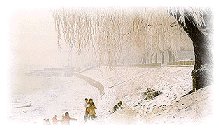 Songhua Lake
Songhua Lake
|
The Songhua Lake is a national attraction known for its serenity and beautiful surrounding mountains. Located 14 kilometers southeast of the city, the scenic area covers 550 square kilometers. The mirror-like lake has very clean water and contains small islands. The Five Tiger Island in the middle of the lake is an ideal summer resort for angling, swimming, rowing, and picnicking. Winter turns the trees along both banks of the Songhua River into a silvery world as the tree branches become covered with snow crystals.
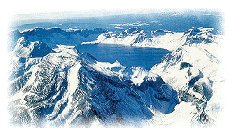 Crater Lake, the Heavenly Lake
Crater Lake, the Heavenly Lake
|
The Crater lake, also known as the "Heavenly Lake," is the creation of a volcanic eruption in 1702. It nestles on the main peak of the Changbai Mountains 2,691 meters above sea level. With an average depth of 204 meters, the 9.2-square-kilometer lake is the deepest lake in China. It is also serves as a border lake between China and Korea. Surrounded by dropping cliffs, the lake is often shrouded by thick fog and endowed with variable weather. With such weather, the landscape changes constantly and is one of the lake's attractive features. Local people might say that there is a strange creature in the lake, but no one can tell for sure. In its vicinity there are also smaller crater lakes and hot springs.
 the Changbai Mountains
the Changbai Mountains
|
The Changbaishan Natural Reserve is China's largest natural reserve, covering 2,000 square kilometers. With its thick forests, crater lakes, and waterfalls, it is a huge natural zoo as well as a giant botanical garden, boasting over 1,400 species of plants, 50 different kinds of animals, and 280 different species of birds. The natural reserve was included into UNESCO's nature reserve network in 1980 and has become an important ground for research in the natural sciences. Meanwhile, it is open to tourists for sightseeing, drawing sketches, shooting pictures, and botanical expeditions.
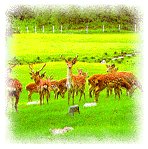 the Longtan Mountain
the Longtan Mountain
Deer Farm
|
The Longtan Mountain Deer Farm lies on the eastern bank of the Songhua River and boasts over one thousand spotted deer. Summer is the best season to see the deer in their best form and color. Aside from this, the farm also uses its vast 170,00-square-meter space to cultivate ginseng and raise martens. Tourists can buy beautiful pilose antlers, excellent ginseng, and magnificent marten fur in the gift shop run by the farm.



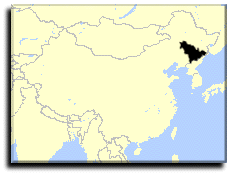










 Chinese Culture
Chinese Culture